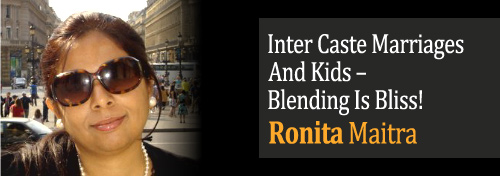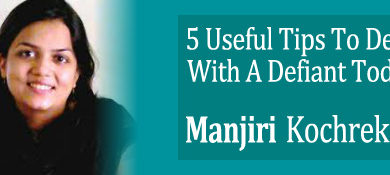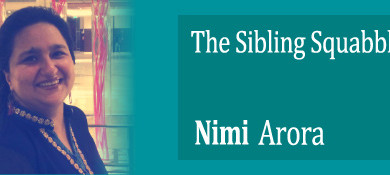Inter Caste Marriages And Kids – Blending Is Bliss!
Marriages are not only unison of two people, but in India it means more than that. Marriages are actually a blend and synthesis of two individual’s traits, their characters and their upbringings. Well an inter-caste marriage has a little more to it. The concoction and interfusion or the sprinkle of mixed “tadka” is not a very grody affair.
The kids who are born to these parents are rather propitious and have the opportunity of entwining the two cultures (India’s unity in diversity has its best usage).
I myself have been fortunate to have the two tadka’s brewing at my home. A Bengali married to a Punjabi and my daughter gets an air of both the cultures in a unique way appreciating the best and the worst of both.
The diversity ranges right from the language to the food, the rituals to the festivities, the dress code to the art form and my little one happily merges into the finer grains in the mixed bag gleefully dancing to the lively Punjabi beats on one hand and relishing the fish and rice platter on the other.
Come Sunday and she is showered with bounteous varieties of gastronomic delights ranging from the two states of the country… be it a “Aloo ka parantha” or “Rasgullas”, “Butter chicken” or “Prawn malai curry”, she beams with gracious sparkles as diversity in a platter is always a great catalyst to strike a kid’s appetite.
The very concept of inter-caste marriages and elders fetching some prejudiced preconceived notions about the adapting quotient is quite an old school of thought; on the contrary it is rather a rewarding twist for the next generation.
The cultural heritage of any caste or tradition is so unique and we as Indian, take all the pride in the very fact that we have such a great lineage of diversity in each state. Isn’t it an icing on the cake if the small family has a colourful bouquet at least of two cultures?
The very concept of accepting other’s customs and traditional value is so commonplace in these marriages that the child intuitively starts to adapt to the diverse environment.
My daughter has her feet thumping in Punjabi wedding wearing colourful costumes with lively gestures and again is quite in rhythm with the slow paced lyrical Rabindra sangeet at her maternal grandfather’s home, be it a Lohri or a Durga puja we celebrate each other’s festival in high spirits. So, this again is a virtuous string which is being assimilated in her being unknowingly.
Children are great learners, their adaptive and grasping capabilities are far-fetched than an adult. The very dawn of a child’s life is with an inquisitive learning ability. That’s the time to strike the chord.
The inter-caste married couples have the greatest bliss of gifting their offspring these endowments. When a child observes the parents mutually respecting each other’s behaviour, language and culture, the child inevitably grows these attributes within, accepting one as he or she is and naturally starts respecting the other’s way of life rather than complaining about the differences.
At least two petals from the flower of language, lots of intermingling tales of two states, plentiful culinary ideas envisaging the two cultures, music of the two palates, the art and colours of the two traditions and the very way of their living, can easily leave beautiful imprints in a child’s mind.
Ronita-Maitra Bhandari is a free-lance creative writer who writes for various sites and blogs. She has also done a certified course in “Positive Parenting” from U.K. She is a mom to a 7-year-old and loves nurturing her greatest resource, her daughter. Apart from writing she is a nature lover and gets energised wandering around green patches. She believes family is a treasure chest and children are those precious jewels in the chest who sparkle to illuminate lives. What else would one desire to live a rich life?


